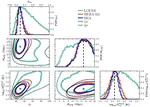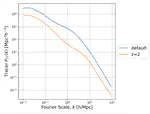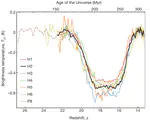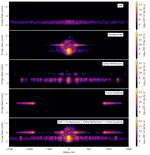Cosmic Dawn
21cmMC uses 21cmFAST to compare observations with theory, and predict astrophysical and cosmological parameters. This is a beast of a process, since it must run thousands of cosmological simulations to generate the predictions. Thus, 21cmMC is highly parallelized with MPI and is geared to run on supercomputers.
21cmMC was originally written by Brad Greig. My primary role has been to integrate it with 21cmFAST v3+, and to improve the interface and extensibility.
I am the primary developer of a new software pipeline for EDGES data. This involves a stack of codes for data reading/writing, calibration, analysis and parameter estimation.
The software is developed by a small team, and I am overseeing the development, in order to transform the EDGES analysis pipeline into something that is highly transparent, reproducible and accurate.
hera_sim is one of the primary codes I contribute to in the HERA software suite. It is geared at simulating HERA-specific instrumental effects (thermal noise, cross-coupling, cable reflections) and injecting them into simulated visibilities.
This code is central to validating HERA’s analysis pipeline (as discussed in the linked paper).
matvis is a visibility simulator: it computes what an interferometer (like HERA)
would measure given a model of the sky. This process is incredibly computationally
demanding for telescopes like HERA that have several hundred antennas (and, more
importantly, several tens of thousands of pairs of antennas). matvis adopts a novel
matrix-based approach to the computation that gets significant acceleration from modern
GPUs. The original author of this code was Aaron Parsons. I have been the primary
maintainer and performance-enhancer in recent times.






